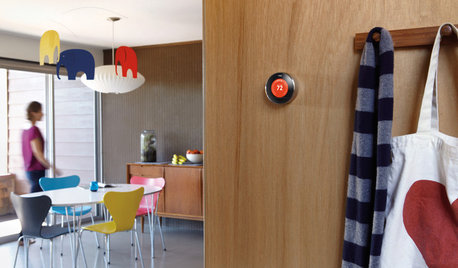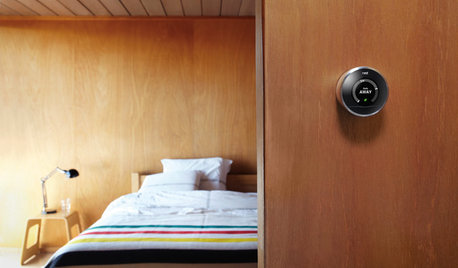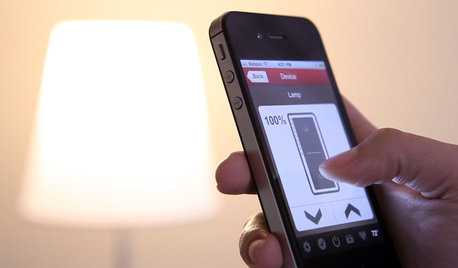Turn down thermostat vs Constant Temp
jaysgarden
13 years ago
Related Stories

HOME TECHWhy Google Just Paid $3.2 Billion for a Company That Makes Thermostats
Smart home technology just got a new champion — and everyone is speculating about the reasons
Full Story
LIFESlow Living 101: Tips for Turning Off the Chaos
It may feel as though you're too busy to slow down and enjoy life. But even little changes can have a big effect
Full Story
HOUZZ TV FAVORITESHouzz TV: Life, Love and Purpose Down on the Farm
A Missouri native proves that you can go home again — and discover something entirely unexpected
Full Story
LIFESimple Pleasures: A Real Sit-Down Breakfast
Give grab-and-go the heave-ho. To start the day right, treat yourself to a proper breakfast in a cheery spot
Full Story
ACCESSORIESEveryday Home Must-Haves Beg for a Makeover
The Nest's much-improved take on the thermostat has us pondering reinventions of other necessities around the house
Full Story
LIFEModern Manners for Conflict-Free Family Visits
Avoid thermostat wars, pet peeves and the great shower squeeze with these tips for having family as houseguests
Full Story
LIFELate Again? Eliminate the Things Holding You Up in the Morning
If you find yourself constantly running late for appointments, work and get-togethers, these tips could help
Full Story
HOME TECHSwitch On the Phone-Controlled Home
Lock your front door from afar, let your thermostat set itself and more when you use your phone as a control device
Full Story
DECORATING GUIDES12 Ways to Cool Your Home Without Air Conditioning
If your summer energy bill is leaving you hot under the collar, consider these savvy alternate strategies for cooling down
Full Story
LIFE6 Ways to Cool Off Without Air Conditioning
These methods can reduce temperatures in the home and save on energy bills
Full StoryMore Discussions








veesubotee
jaysgardenOriginal Author
Related Professionals
Mokena Solar Energy Systems · Ramsey Solar Energy Systems · Sanger Solar Energy Systems · Syosset Solar Energy Systems · Yucca Valley Solar Energy Systems · South Whittier Solar Energy Systems · Garden Grove Home Automation & Home Media · Los Angeles Home Automation & Home Media · Massapequa Home Automation & Home Media · Oceanside Home Automation & Home Media · Rosenberg Home Automation & Home Media · San Diego Home Automation & Home Media · Aurora Fireplaces · Lone Tree Fireplaces · Palo Alto Fireplacesveesubotee
brickeyee
kframe19
david_cary
jaysgardenOriginal Author
jaysgardenOriginal Author